I absolutely love Vitamix Blenders. Throughout my professional career I have had the privilege to work almost constantly with these incredible appliances, and when I got married my only submission to our registry was a Vitamix Professional Blender. Luckily, my wife's cousins were kind enough to team up and fulfill my wish of becoming a Vitamix owner. Since then I have used a Vitamix at home on a weekly basis in addition to my consistent usage in professional kitchens.
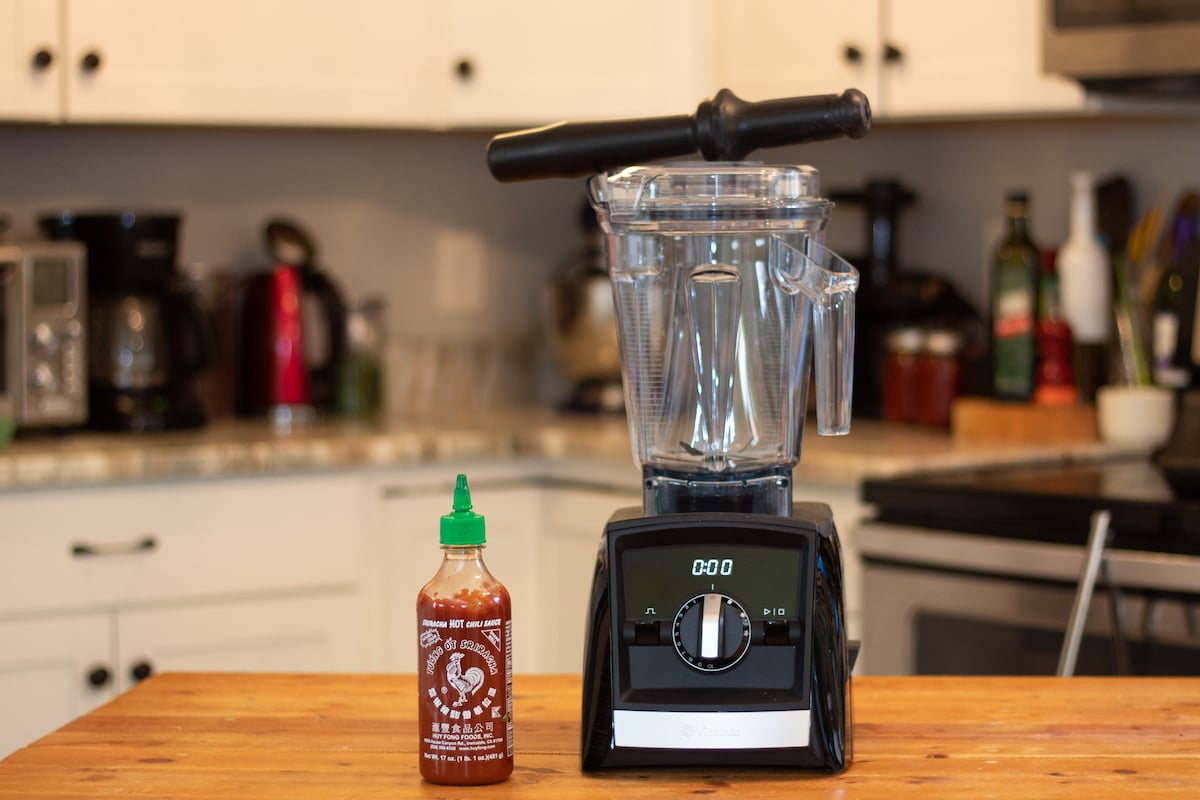
Vitamix, for the uninitiated, makes incredibly high-quality blenders and kitchen appliances. These blenders are highly regarded in professional circles as well as by home cooks for their abilities to puree almost anything. In the past, I've made peanut butter, smoothies, purees, soups, salsa, crushed ice, milk-shakes, and even soups from scratch in my Vitamix, and after almost 9 years of constant use, its still as good as the day I removed it from it's the packaging.
Recently I had the great fortune to get a chance to spend some time with a few of the Vitamix Ascent series of blenders. While I'm always going to be a fan of my Vitamix Pro 200, I'm a fan of anything new and shiny so I was over the moon when these blenders showed up on my doorstep.
The Ascent series of blenders from Vitamix is a pretty big jump up from my pro line blender. While they have the same high-powered motors and high-quality construction. The Ascent line especially the Vitamix A2500 is a very attractive blender. Furthermore, it fits on my countertop.
One of my biggest complaints about my current Vitamix is its high profile. It sits really tall and doesn't fit beneath my counter when fully assembled. With a wider, lower-profile blender pitcher the A2500 Blender fit snugly beneath my top cabinets on my countertop without issue.
Throughout this article, I aim to break down the performance of this incredible blender. To explain where it does things really well and what Vitamix might want to improve in future models.
If you don't want to read the entire thing I understand, so I'll leave you with this: The Vitamix Ascent A2500 series blender is an incredible blending system. If you are in the market for a high-end blender and budget isn't an issue I would without hesitation, recommend the A2500 as a great option for your home kitchen.
Table of Contents
- What’s in the Box?
- How Does It Look/Feel/Sit?
- How Easy is it to Set Up?
- Test #1: Crushing Ice
- Test #2: Making a Smoothie
- Test #3: Making a Frozen Dessert
- Test #4: Hot Soup
- Test #5: Pureeing Vegetables (Without Presets)
- About the Timer
- About the Pulse Feature
- How Easy Is It To Clean?
- How Would I Improve the Vitamix A2500 Ascent Series?
- What’s the Warranty?
- Verdict
- How Does it Compare?
What’s in the Box?
Unpacking Vitamix blenders is a straightforward process. Vitamix uses their shipping boxes as their packaging boxes resulting in less waste and cleanup. I love well-branded packaging as much as the next consumer, but I am also a fan of recycling, and saving room in my recycling bin with less trash is always a plus in my book.
Inside the packaging for the Vitamix A2500 I found:
- 1 Vitamix Ascent A2500 blender base
- 1 64 oz low profile blender pitcher
- 1 tamper
- 1 quick start guide
- 1 users manual
- 1 hardbound Vitamix "Simply Blending" cookbook
How Does It Look/Feel/Sit?
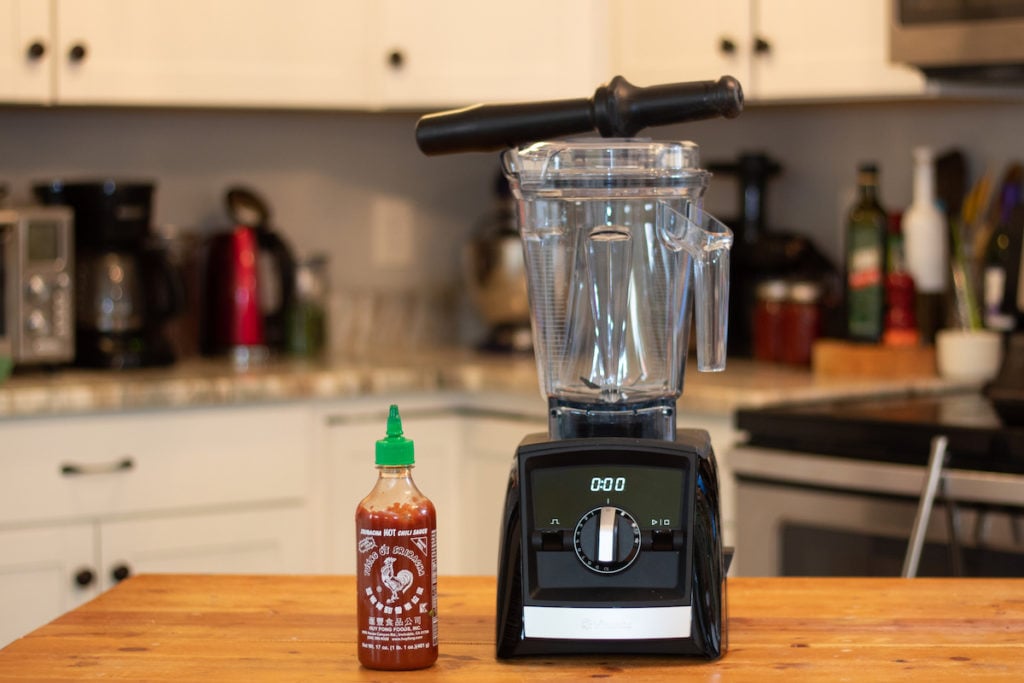
While the Vitamix blenders I've used in the past have been incredible appliances capable of blending almost anything I could put in them, they were never what you might call attractive appliances. It seemed to me that Vitamix put function before form, creating utilitarian appliances that were definitely professional grade in appearance as well as construction.
The Ascent series combines the incredible quality and power of a Vitamix blender with a much more attractive aesthetic and design. With a sleek black blender base accented by silver high lights and a low profile blender pitcher, the Ascent A2500 is both pretty to look at and a highly functional kitchen appliance.
One area that the Ascent vastly improves upon the older legacy Vitamix models, is with its low profile design. I have always hated that I can't fit my Vitamix Pro200 on my countertop when it's fully assembled. Because the older Vitamix models had a higher profile blender pitcher, they sat higher when fully assembled and won't fit beneath overhead cabinets on most countertops. The Ascent A2500 avoids this issue, by using a wider pitcher with the same capacity as the older models and a lower overall height!
How Easy is it to Set Up?
Because of the straightforward design and a lack of accessories, the Vitamix A2500 was a snap to set up. I removed the blender base, pitcher, and tamper from the packaging as well as any other plastic bags or protective covers and placed the parts on my countertop. I plugged the blender in and settled the pitcher on top of the base with the lid fixed to the top.
It did take me a second to locate the power switch, most of the older models have a power switch located below the control panel on the front of the blender base. The Ascent series on the other hand has the power button located on the right-hand side of the blender base toward the back of the appliance. Once I located the power switch I was ready to get blending.
Test #1: Crushing Ice
Crushing ice in a blender is one of the many reasons consumers choose to purchase a new appliance or buy one blender over another. While I've always loved my Vitamix, the slim high profile design has always made it difficult to get great, high-quality crushed ice. Because of the narrow blender pitcher on my Vitamix Pro model, the ice can't move freely creating uneven particle size and less than ideal crushed ice.
Thanks to the wider, low-profile blender pitcher the Ascent A2500 is much better at crushing ice. To test the A2500 I loaded 6 cups of ice into the 8 cup pitcher, locked the lid in place, and secured the blender pitcher on top of the blender base. I turned the speed selector to the frozen dessert preset and stepped back to snap a picture.
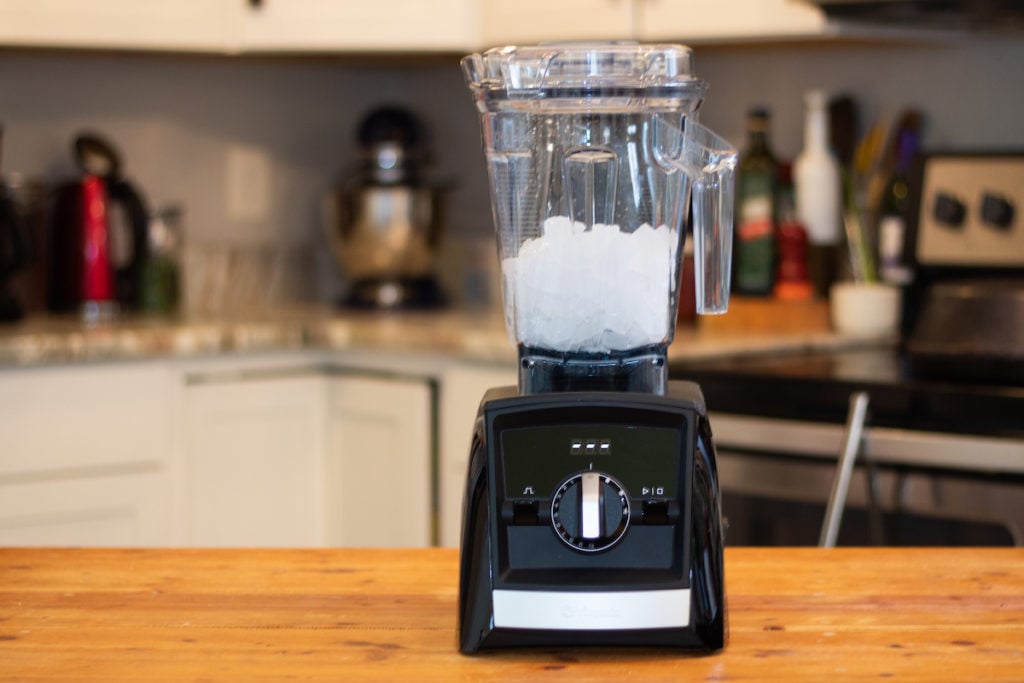
The frozen dessert preset - a feature of only two blenders in the Ascent range, the A2500, and the much more expensive A3500 - is a 55-second program that alters the speed of the blender as it runs to get the best possible texture. It worked perfectly for the crushed iced. I was worried at first because whenever I crush ice in a blender I like to use the pulse function, but in order to get a picture of the Ascent A2500 in action, I needed both hands free.
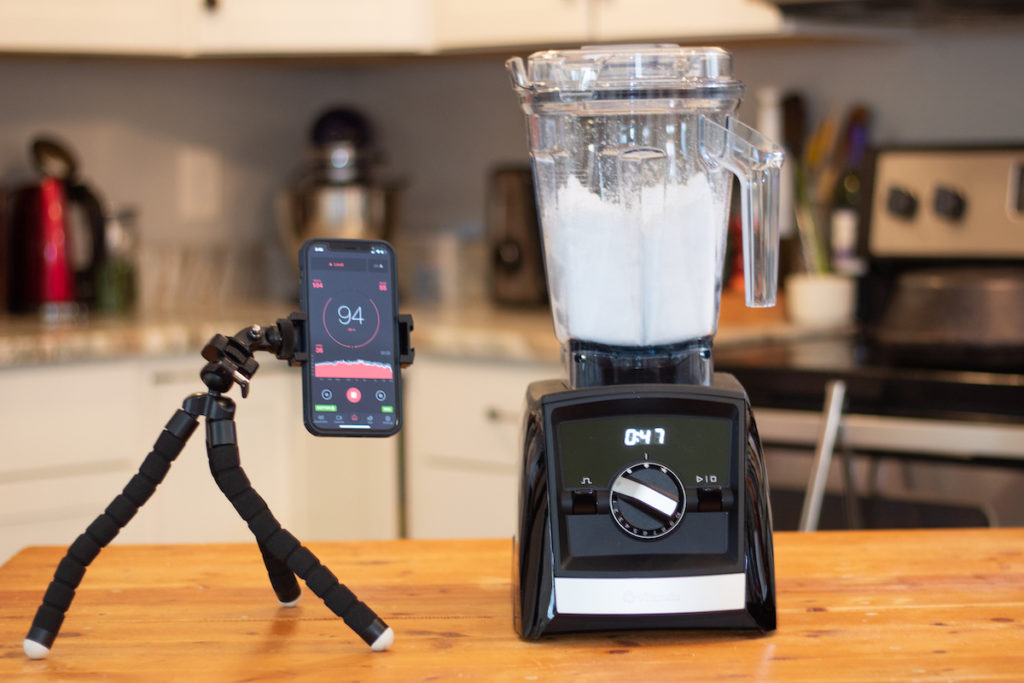
Before I go further, note the noise level in this picture: 94db. Crushing ice in a blender is about the loudest thing you can do, and the A2500 did it without crossing 100db (which other blenders I've tested will do with ease).
After letting the blender run for the preset time I was left with perfectly fine, snow-like crushed ice that would work great in a snow cone or a margarita depending on the crowd. The 6 cups of ice I started with was reduced to 4 cups of crushed ice, more than enough for 3-4 people, and I could have absolutely filled the blender to capacity and get the same quality ice without issue.
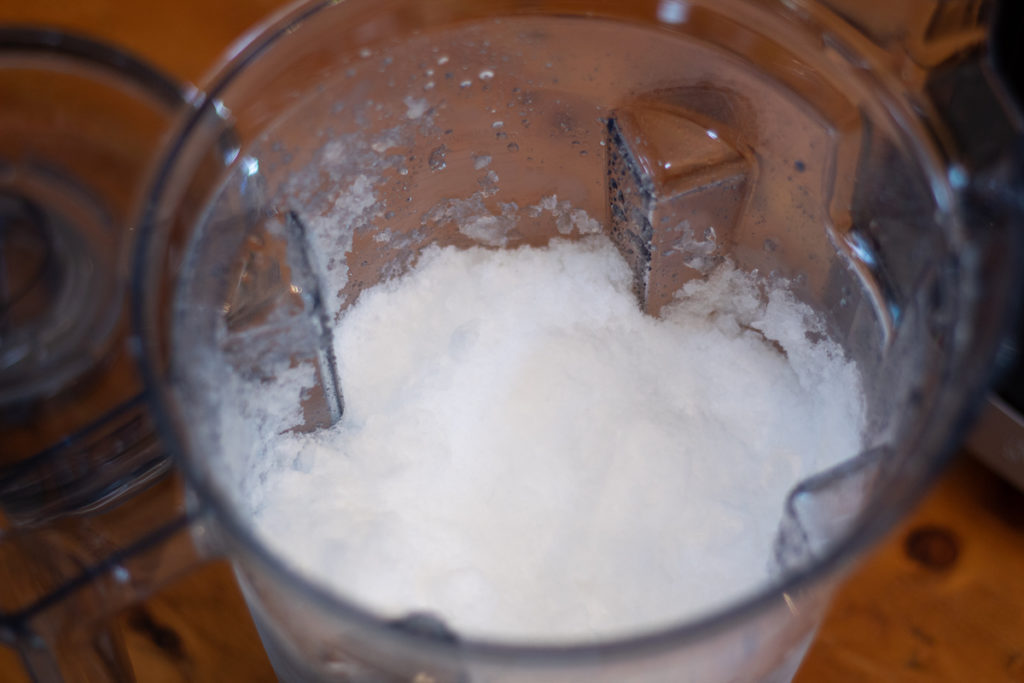
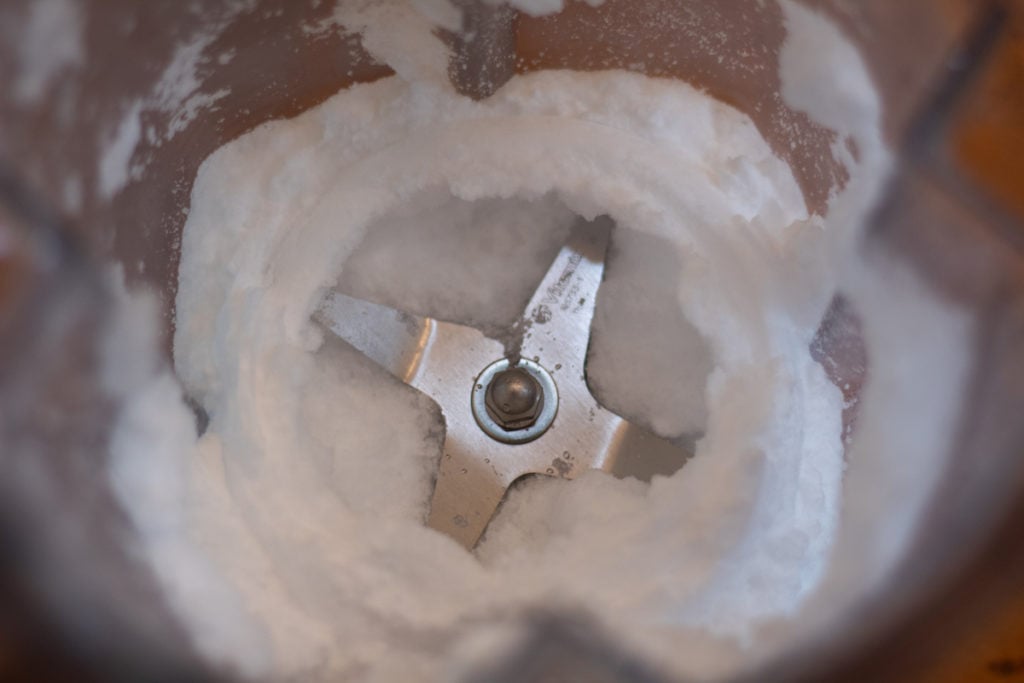
Test #2: Making a Smoothie
I love smoothies and I also love milkshakes. I'm really just a big fan of any frozen treat, especially on a summer day. Smoothies are like milkshakes for breakfast, obviously on the healthier side, but the comparison is accurate, and maybe that's why I make them so regularly. My daughter refers to our current Vitamix as "daddy's smoothie machine" and it makes sense because 9/10 of what I make in there are my morning smoothies.
One feature I was uniquely excited to try on the Ascent A2500 was the smoothie preset. While my blender gets the job done efficiently, a smoothie preset or really presets, in general, have been something I've always wanted on my blender. I'm a fan of 1 touch operation and anything I can press a button on and walk away from is always an investment in my book, especially when mornings are already hectic with a toddler to contend with.
To test the smoothie function I loaded 2 cups of mixed frozen mixed mangos and strawberries into the blender alongside a cup of milk and 6oz of raspberry yogurt. I added a banana to the mix, locked the top into place, and set the blender pitcher onto the Ascent blender base.
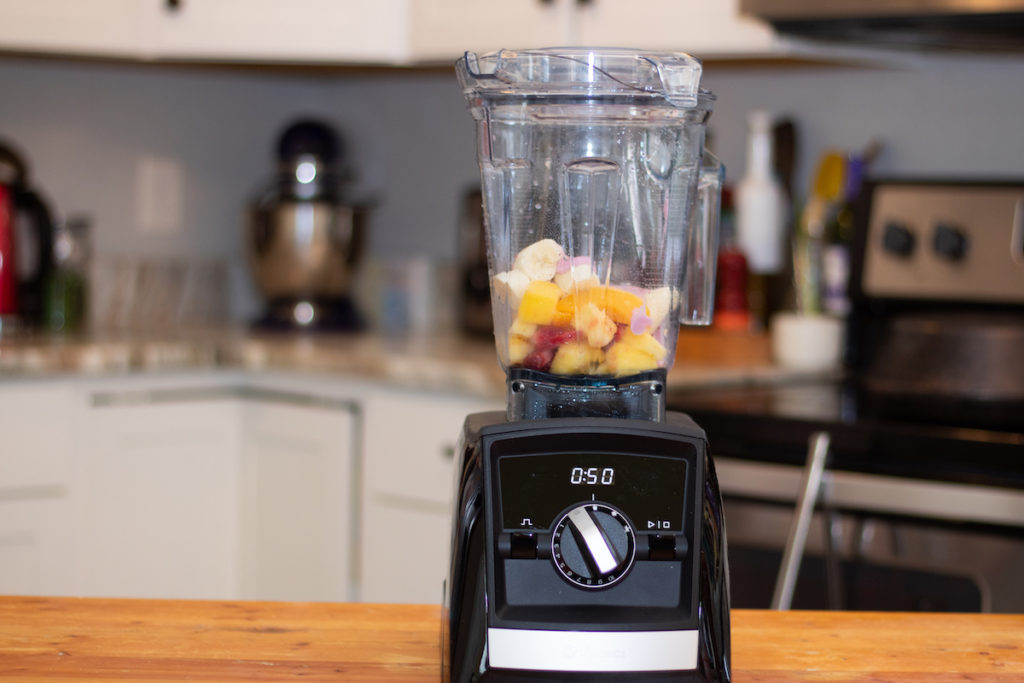
To make this smoothie I used the smoothie preset, I powered the blender on, turned the dial to the smoothie pictogram, and clicked the start switch. I should note that you have to push the start switch down for at least a 1 count before it engages, this is most likely a safety feature to make it harder to accidentally engage the blender.
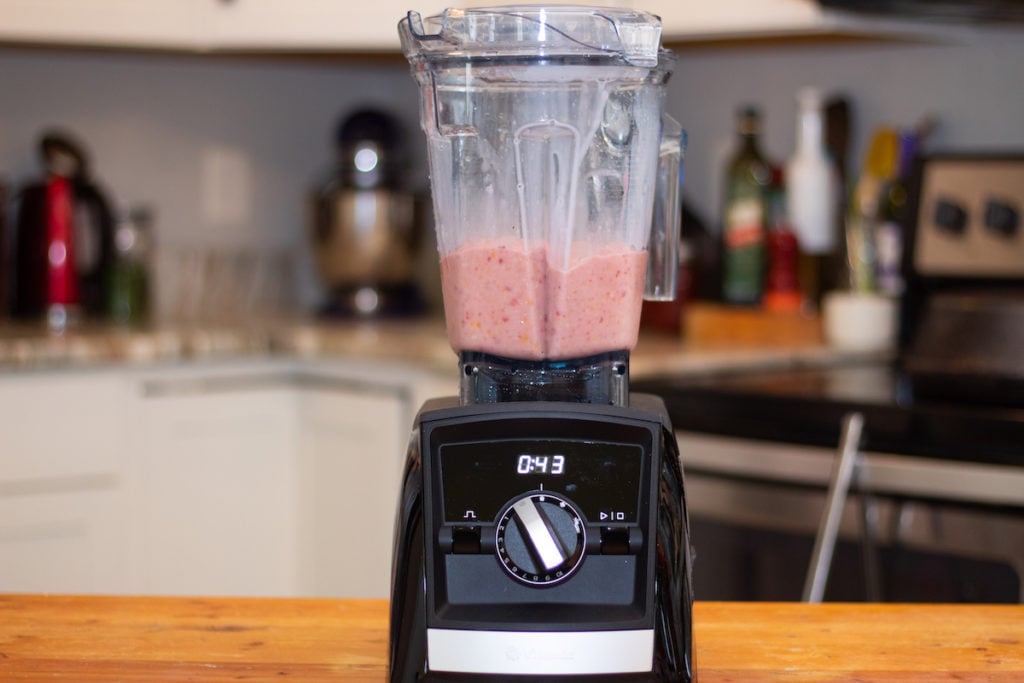
The smoothie program is ~50 seconds, so in the time it took me to step back and take a photo or two, the smoothie was almost finished.
Normally I need to use the tamper on my smoothies to make sure all the ingredients mixed quickly and effectively. Thanks to the smoothie program and the variable speed throughout, I didn't have to touch the blender once to make a perfect smoothie.
My fruit punch smoothie was as delicious as it always is, but unlike in less expensive blenders, Ninja, or Oster models, for example, the texture of the smoothy was far superior. Most less expensive can create delicious smoothies, but they will always have a slightly grainy texture to them. The smoothie I made in the Vitamix A250 Ascent Series Blender was so much smoother, almost more like a milkshake in texture than a fruit smoothie.
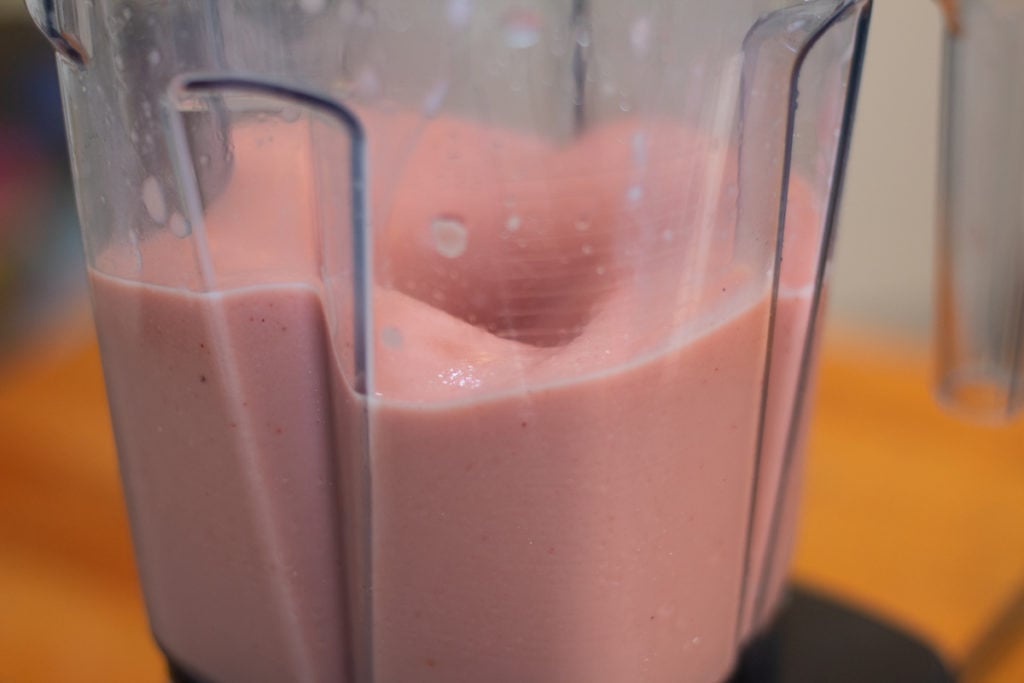
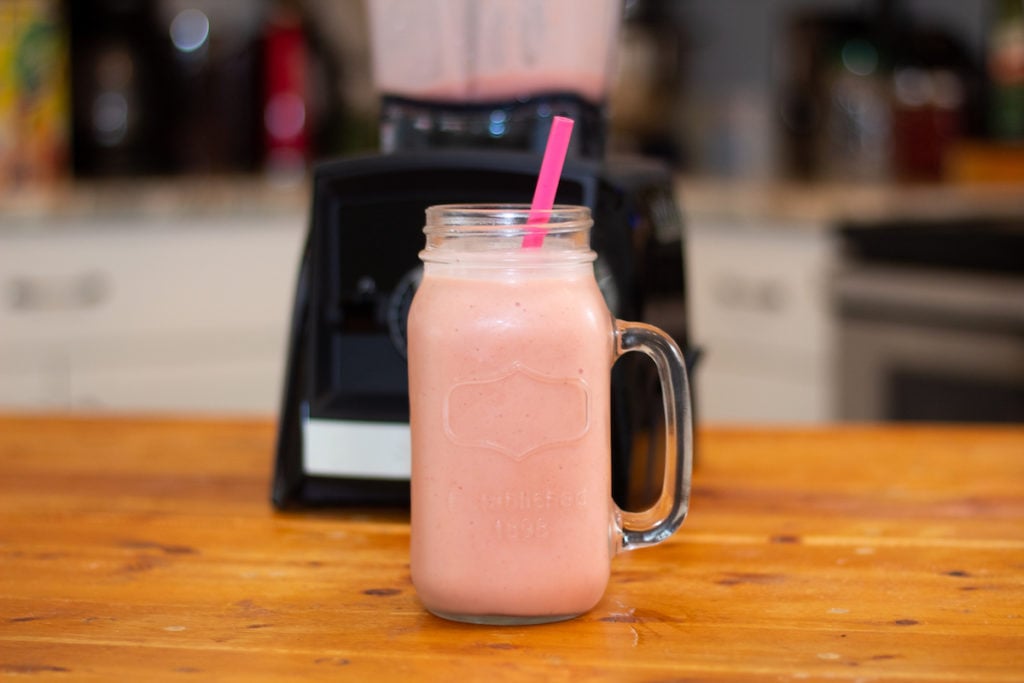
Test #3: Making a Frozen Dessert
As I mentioned earlier, I'm a fiend for frozen treats, especially in the summertime. In recent years, as I've tried to eat healthier, "nice cream" has begun to become my treat of choice, especially considering how easy it is to make at home.
I like to think of "nice cream" as any fruit-based frozen dessert that can be easily produced in a blender or food processor. By quickly pureeing frozen fruits and yogurt or coconut/almond milk with a touch of sugar, you can create a healthier alternative to ice cream in the comfort of your own home.
For this test, I decided to make one of my favorite nice cream recipes, Blueberry Lime Freeze with Chocolate Chip Granola!
To start I added 2 cups of frozen blueberries, 1 cup of greek yogurt, ¼ cup of powdered sugar, and 2 tbsp of fresh lime juice to the Vitamix A2500 blender pitcher. I locked the lid onto the blender pitcher and placed the pitcher onto the blender base.
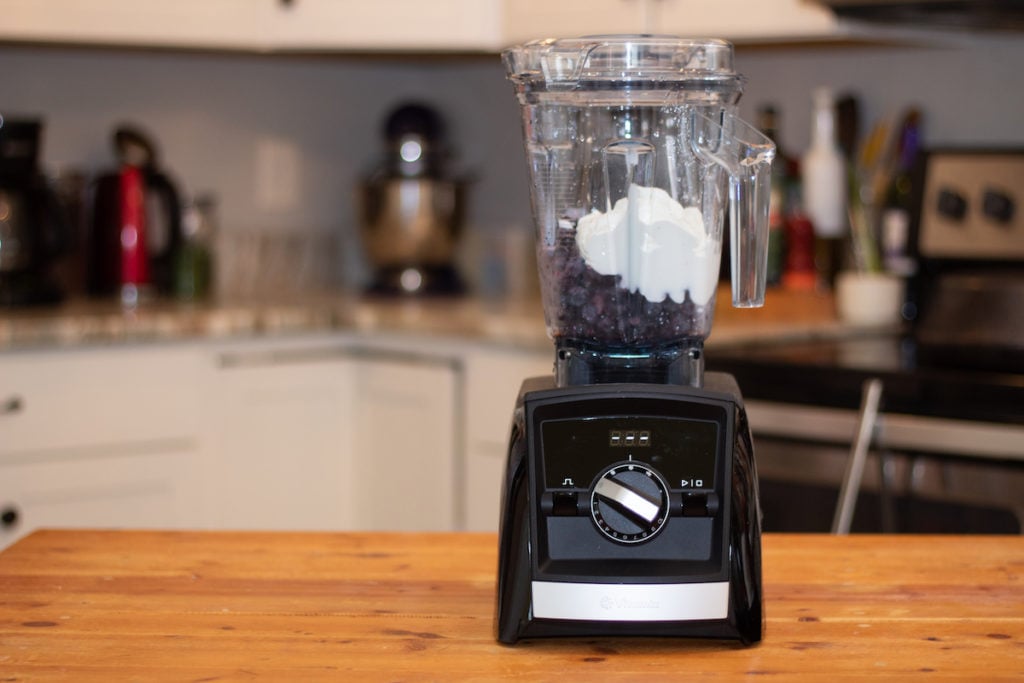
I chose to use the frozen dessert preset for this recipe because I wanted to see how effective a ~55-second program could actually be in creating something that in my experience often takes 2 minutes or so. I pressed the button and stepped back to let the blender do its thing.
After 55 seconds the blender stopped mixing and I was left with almost perfect blueberry nice cream. I personally like a smoother texture in my nice cream so I put the blender back on the base for another 15 seconds of blending at speed 6, but after that the texture was sublime.
I transferred the nice cream to an airtight freezer-safe container and put it in the freezer to harden for 30 minutes. To serve the blueberry lime freeze I scooped it and topped it with my favorite chocolate chip granola!
It's hard to explain how much of an advantage the low-profile blender pitcher is over the taller more narrow pitchers I've been using for the past two decades. The large surface area to blade ratio is so much more beneficial to the finished product in recipes like this frozen blueberry dessert.
This was the fastest and best nice cream I've had the chance to make so far in my cooking career and I'm looking forward to seeing what other recipes I can come up with.
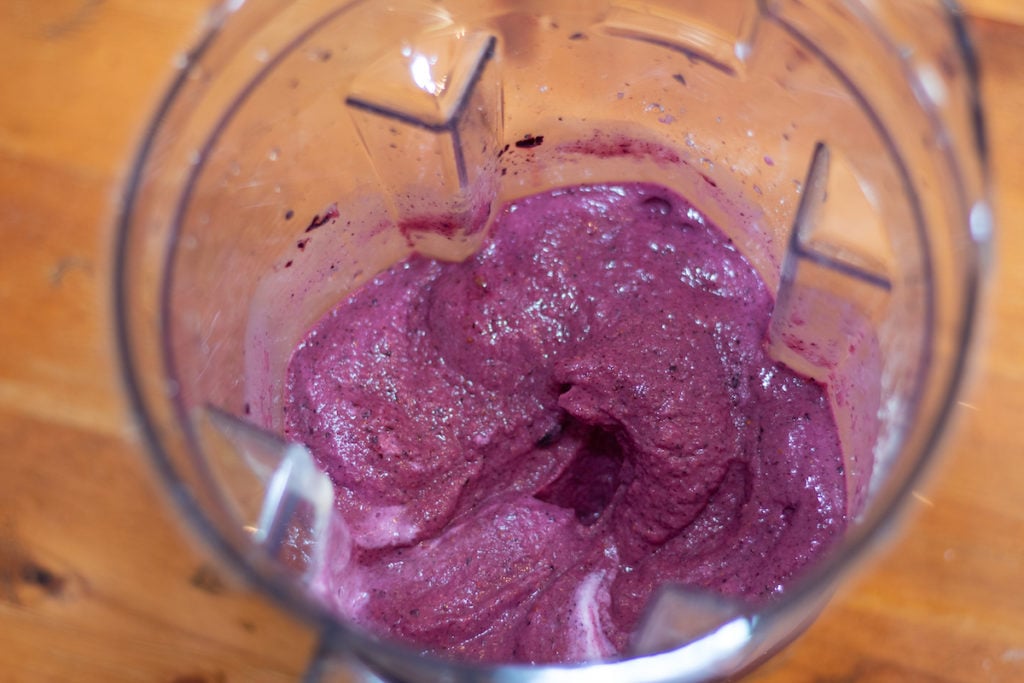
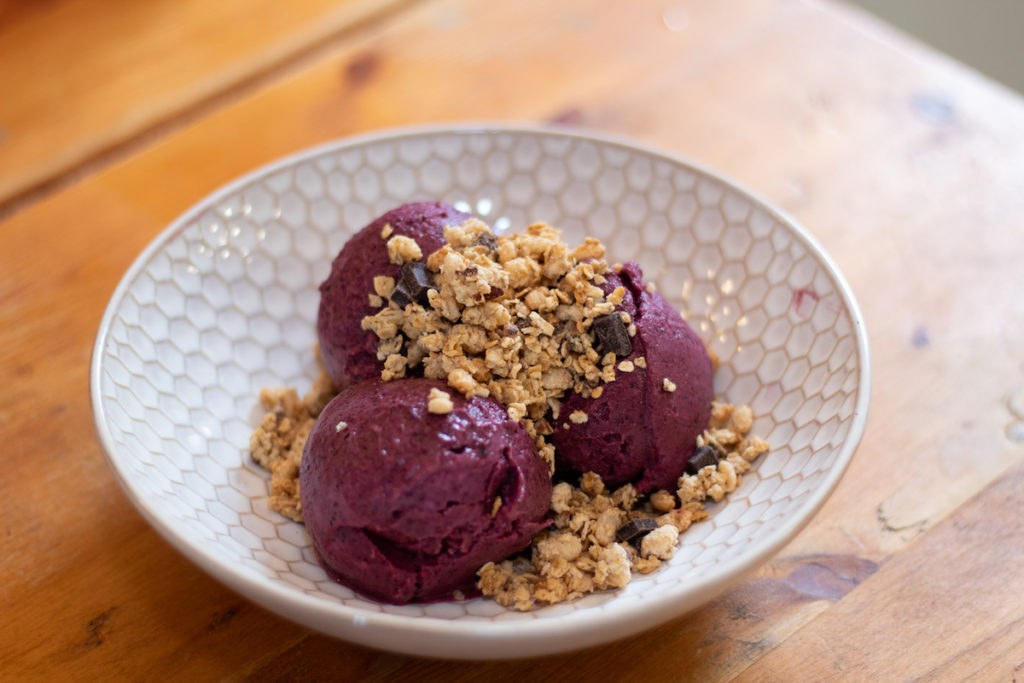
Test #4: Hot Soup
One of the most consistent claims for Vitamix blenders is the ability to create a hot soup from scratch entirely in the blender itself. While I've been curious for some time about this feature, I've never tried it myself, so I thought this review would be the perfect excuse to give it a go.
I decided to make a tasty carrot ginger soup that has always been one of my favorite chilly day recipes. I chopped 3 cups of baby carrots into smaller pieces and loaded them into the blender pitcher. I added 1 tablespoon of chopped ginger and 2 cloves of garlic to the pitcher as well as 1 cup of chicken stock and ½ a cup of water.
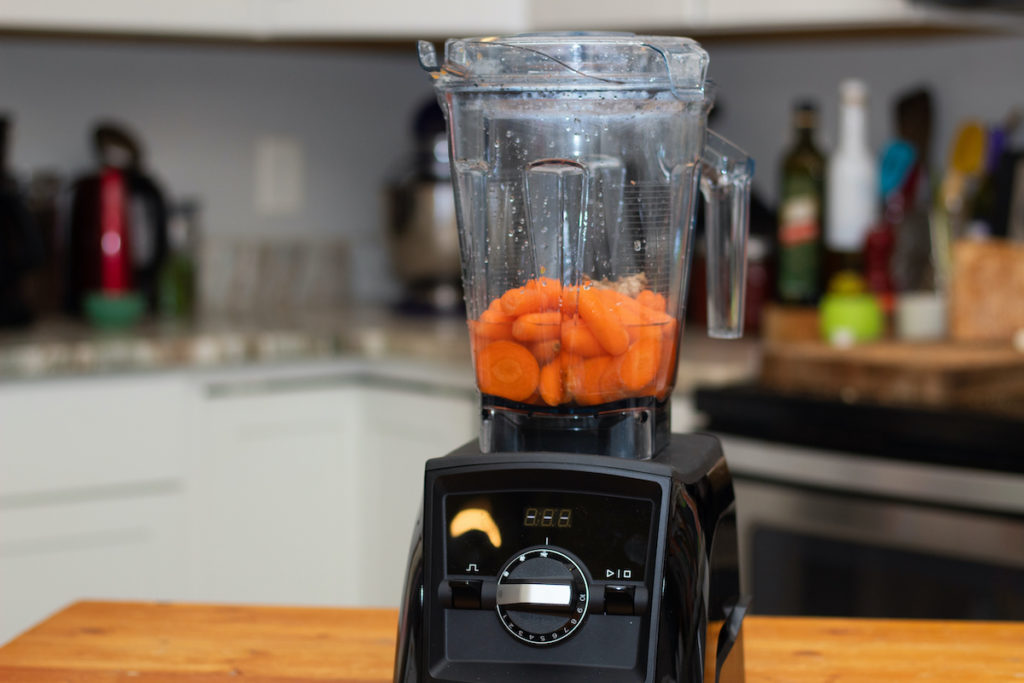
Then I attached the lid to the blender and placed the pitcher onto the blender base. I decided to use the hot soup preset for this test to get an idea of whether or not the preset was actually sufficient to produce a hot, fully cooked soup. Initially, I had doubts about this given what I assumed to be a short blending time of fewer than 6 minutes.
I moved the speed dial to the "hot soup" preset and pressed the start button before sitting back to wait the allotted 6 minutes. Once the blender stopped, I realized just how wrong I was to be worried about the blending time.
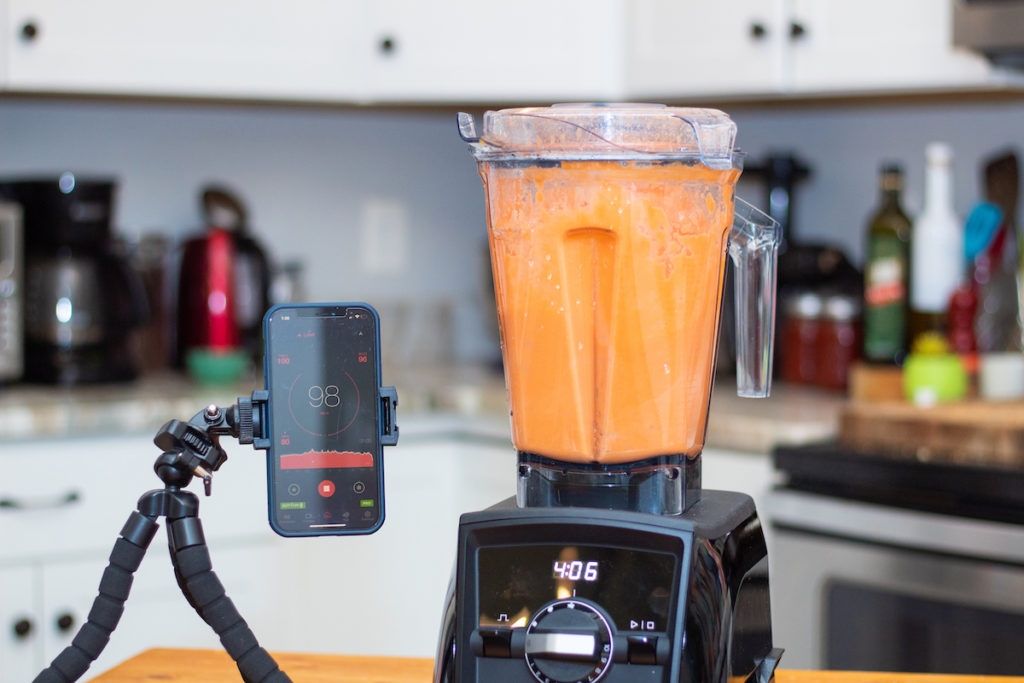
By the way, this was the loudest I could get this blender. Still under 100db. That's at full power after running for 4 minutes. The reduced noise level of this Vitamix was a big plus compared to my older model.
When I opened the lid I was greeted with a steaming hot, perfectly pureed carrot ginger soup. I tasted the soup and adjusted the seasoning with salt, pepper, and a little rice wine vinegar. I returned the pitcher to the blender for another 20 seconds and then gave the soup a try.
This was a perfect carrot soup. Rich, warm, and with an incredibly smooth texture, I was amazed at what the Ascent A2500 accomplished without ever having to "cook" an ingredient.
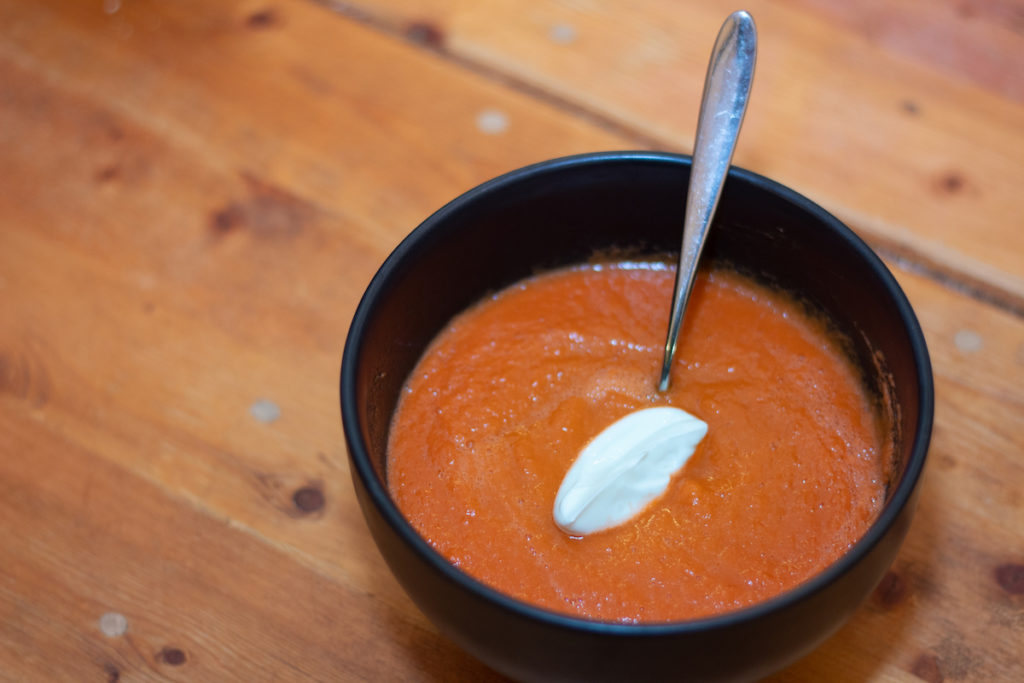
Test #5: Pureeing Vegetables (Without Presets)
When my kid was just an infant I made the decision to try to make as much of her baby food as possible. I'd been making purees for years in high-end restaurants, and baby food is nothing if not a poorly seasoned vegetable puree. I loved making baby food in my Vitamix, its high-powered motor and tamper allowed me to create perfect purees without having to add excess liquid.
When I was thinking up a vegetable puree to test on the A2500 I decided to go with one of my kid's favorites from her younger days, sweet potato puree!
To cook my sweet potatoes I decided on an old trick I learned years ago and put them in the microwave on 5-minute cycles at high power. I pricked the flesh with a fork first to allow steam to escape and pressed the start button. After the first cycle, I flipped the sweet potatoes and set the timer for another 5 minutes. It took 15 minutes total to completely cook the sweet potatoes, but it takes almost double that in a hot oven, and when your only making 2-3 potatoes worth of puree the microwave is simply more efficient.
I peeled the potatoes and placed them in the blender with just a few drops of olive oil. I locked the lid into place and set the pitcher onto the blender base. I set the speed selector to speed 3 and pressed the start-stop button. I stepped back to snap a few photos of the blender in action before returning to the blender and using the tamper to help move the puree. Thick foods sometimes get stuck as they are in the initial blending stages and using the tamper can help keep the food moving through the blade system.

I love the tamper included with Vitamix blenders, and this tamper is no exception. It's perfectly measured so you can safely move food while it's blending without worrying about getting the tamper caught in the blades and ruining the recipe.
After a minute of blending on speed three, I started to increase the blender speed incrementally. It took around 2 minutes to get to speed 8, but at that point, I was satisfied with the texture and turned the blender off.
This sweet potato puree was textbook. If I had seasoned it more fully I could have used it in any of the restaurants I've spent time cooking in without issue.
The fact that I was able to make perfect pureed sweet potatoes in under 2 minutes in the blender, whether it's for a baby or for a fancy dinner, is a wonderful capability.
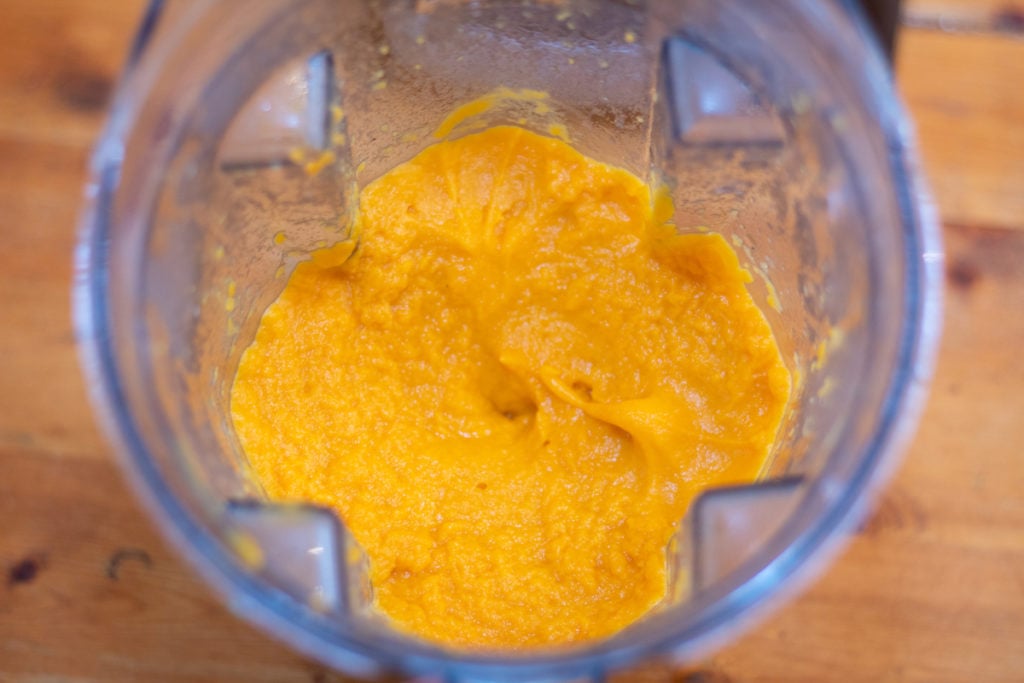
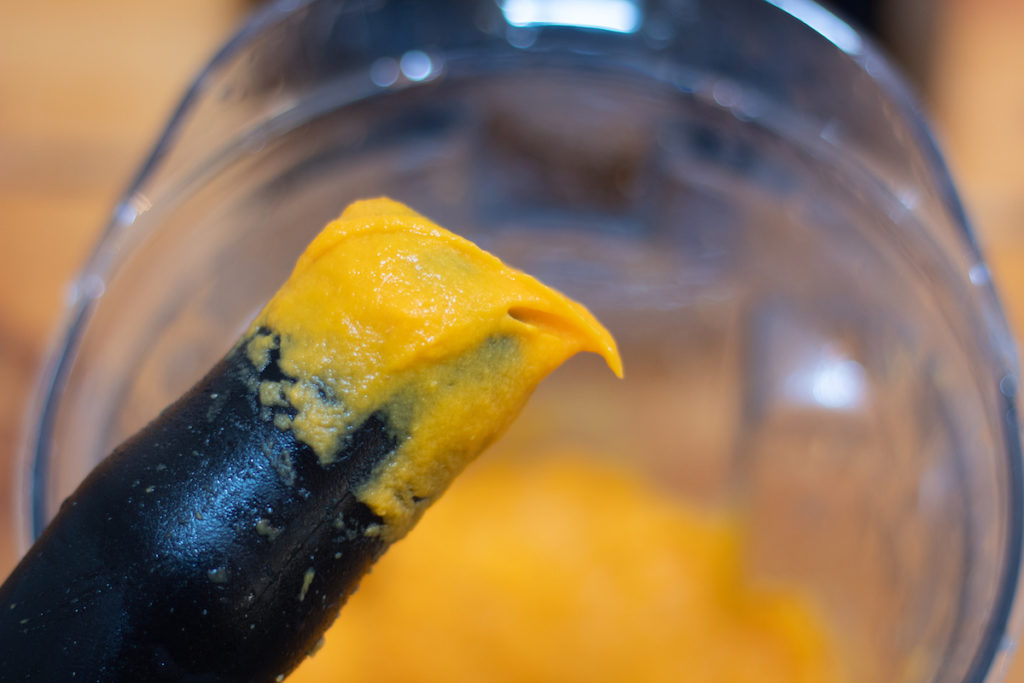
About the Timer
The Ascent series of blenders come with two different timer options depending on the price point. There are count-up and countdown timers. The count-up timer is simply a stopwatch that allows you to see how long something has been blending for. This is useful if you are recipe testing or want to make be more accurate in your cooking.
The more expensive options in the Ascent line (A3300 and A3500) come equipped with a count-down timer which works as you would expect a timer to. You set the timer to a given time and once that amount has elapsed the blender stops its cycle. This is more useful if you are worried about overheating a smoothie or milkshake, or if you are looking to blend something for a specific, known amount of time like a hot soup or a batter.
During my testing I was able to experiment with the A2500 and the A3300, the A2500 came with a count-up timer, while the A3300 came with the count-down option. Personally, I found the preset options on the A2500 to be more convenient overall than the countdown timer on the A3300. Furthermore, the trade-off for the more expensive blender without the preset functions isn't worth the money to me, even if it does come with a countdown timer instead.
About the Pulse Feature
Pulsing is probably one of the least understood functions on a blender or a food processor. It is probably also the most useful function when it comes to getting consistent texture throughout your blended products.
To properly pulse food you engage the pulse button which cycles the blender on and off. This causes the food to jump up and down, which is key when you are first blending a product, especially larger items. This jumping motion allows the food to mix while it blends and achieves a consistent particle size that will make it easier to get even more consistent texture as you blend further.
I like to use the pulse feature whenever I'm making something incredibly thick, or if I'm trying to chop something to a specific size, like crushed ice.
How Easy Is It To Clean?
I've mentioned the low profile design of the blender pitcher repeatedly throughout this article and I'm going to do it again here. Because of the new low-profile pitcher design, I was able to clean the pitcher quickly and effectively between each test. The larger, wider pitcher made it easier to spray and rinse ingredients stuck around the blender blade. It also makes it easier to scrub around the container safely without worrying about hurting yourself on the blade assembly.
To clean the blender I decided to make my own cleaning cycle even though the A2500 model doesn't come equipped with one. To do so I rinsed the pitcher and put in about 2 cups of warm water with a few drops of soap. I put the pitcher on the blender base with the lid tightly secured and chose the smoothy preset. I allowed the blender to mix for 50 seconds before removing the pitcher and rinsing it thoroughly with hot water.
The Vitamix A2500 Ascent Series, like all of the Ascent Series blenders, is equipped with a dishwasher-safe pitcher. Though I personally don't like to use the dishwasher to wash my blender pitchers, it is nice to know that in a pinch you can put it right in the dishwasher and get it cleaned with the press of a button. The main reason I don't like to wash my blender pitchers in the dishwasher is that over time the high-powered water and soaps used in the dishwasher will dull the blade assembly. While this will happen anyways over time I like to try to extend the life of my tools for as long as possible.
I did test the dishwasher friendliness of the blender pitcher and I was pleasantly surprised. It was easy to load into the dishwasher and sat snugly on the bottom rack. It came out in pristine condition after a 1-hour quick wash cycle. Though I probably won't use this feature again, it's nice to know I can in a pinch.
How Would I Improve the Vitamix A2500 Ascent Series?
I had the opportunity to evaluate two blenders from the Ascent series of Vitamix blenders and as they are almost identical designs I found similar issues with both models. Though none of these are deal-breakers by any means there are some things that Vitamix could consider fixing in future models.
- The power button was hard to locate at first. The start-stop switch was very clear and easy to find but by placing the on-off switch towards the back of the machine it felt harder to find than it should be. See the photo below.
- The only way to remove the blade assembly is with a special tool and it's not included with the blender. I like to clean a blender pitcher thoroughly and the ability to remove the bottom blade assembly to clean food build up around the o-ring is a nice feature. I wish they had included the wrench to remove the bottom blade assembly.
- The cord felt short, and it didn't have a great way to store it when putting it under a cabinet or in a drawer. While I intend to keep this blender on a countertop, ease of storage is important and good cord management is the key to easy storage. I would like to see a better way to stow the cord in the future if possible.
- The Vitamix App was difficult to use and confusing to navigate. Though the app is meant to pair directly with the Ascent, and it did fairly easily, I found myself opting for the blender control panel versus the app interface.
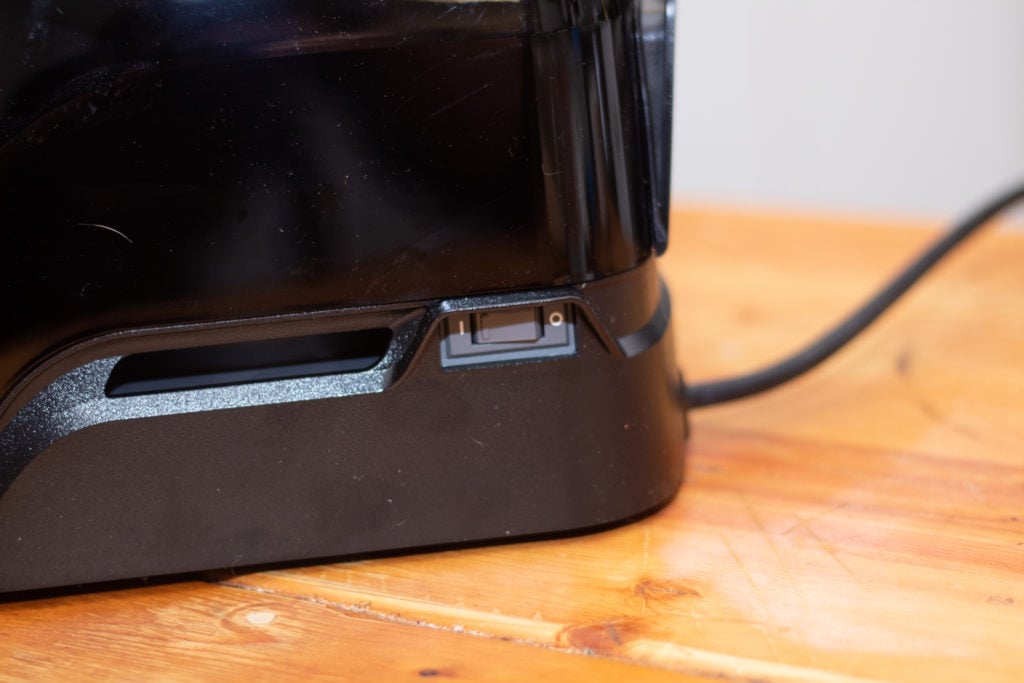
What’s the Warranty?
Vitamix backs all of its products with an incredible 10-year manufacturer's warranty and the Ascent A2500 Blender is no different. The 10-year manufacturer's warranty covers defects in the quality of manufacture for 10 years from the date of purchase.
To take advantage of the warranty it's important to mail in the registration card that comes with your Vitamix Ascent A3300. In the event, you need a repair or replacement you can call Vitamix Customer Service at 1.800.848.2649 to begin the process. For more information about the warranty process head to this link.
Verdict
The Ascent series by Vitamix is an incredible line of high-end blending systems. Of the two models I had the chance to review this past week, the Ascent A2500 is the model I prefer. Though it doesn't have a countdown feature like the more expensive models in this lineup, it does have 3 incredible presets that made it a cinch to produce a number of different recipes in my test set.
Overall this blender would make an incredible addition to any home kitchen as long as you are ok with the price tag. It may not be the blender for everyone but if you are looking for incredible features like wireless connectivity, a high-powered motor, low profile design, and a name for quality and precision, then the Vitamix A2500 Ascent Series blender is the model for you. If you want the added capability of a count-down timer or a touch screen digital display consider going with one of the other models in the Ascent series, more on which below.
How Does it Compare?
Vs Other Ascent Range Blenders
 Vitamix Ascent A2500 $599.95 |  Vitamix Ascent A3300 $649.95 |  Vitamix Ascent A2300 $599.95 |  Vitamix Ascent A3500 $699.95 |
|
| Container | 64oz | 64oz | 64oz | 64oz |
| Presets | 3 | 0 | 0 | 5 |
| Timer | Count up | Countdown (Programmable) | Count up | Countdown (Programmable) |
| Clear Lids | Y | Y | Y | Y |
| Dishwasher Safe Containers | Y | Y | Y | Y |
| Fits Baby Food Container | Y | Y | Y | Y |
| Fits Food Processor Attachment | Y | Y | Y | Y |
| Max Noise (Our Test) | 98db | 96db | 98db | 96db |
| Cord Length | 4ft | 4ft | 4ft | 4ft |
| Weight | 11.86lbs | 13lbs | 11.86lbs | 14.92lbs |
| Height | 17 inches | 17 inches | 17 inches | 17 inches |
| Renewed | N | N | N | N |
| Warranty | 10 year | 10 year | 10 year | 10 year |
| Check Price on Amazon | Check Price on Amazon | Check Price on Amazon | Check Price on Amazon |
The Vitamix Ascent Line includes four different blenders.
- Ascent A2300
- Ascent A2500
- Ascent A3300
- Ascent A3500
All of these blenders come equipped with a 2.2 horsepower motor, 64 oz low profile containers, and a sleek black finish with stainless steel accents. Like a car, all of these blenders are built on the same platform, they just come with different accessories and features that increase the price.
The Ascent Series blenders also come equipped with wireless Bluetooth connectivity through the Vitamix proprietary app. Even though some of the ascent series don't come equipped with preset blending programs, the Vitamix app can upload a program directly to your blender with the click of the button. I will say that this app is frustrating and could use some design work, but it seriously expands the functionality of these blenders.
The A2300 is the least expensive of the Ascent line, and despite the lack of preset functionality, it is a great blender. It can do everything any of the ascent blenders can do, it just requires more monitoring than some of the pricier models. It has an analog speed control as well as a count-up timer and a pulse switch, which for many is more than enough functionality for any blender.
The A3300 is a step up from the A2500 in price but I don't think that necessarily means it's the better blender. While the A3300 is a touch screen model, with a count-down timer, the A2500 has 3 presets that I found to be really convenient and while it doesn't have touch control, I also like analog switches better. Both of these models have bright digital displays and both can handle the same products with ease.
Finally, there is the A3500, the priciest of the Ascent Series. With a countdown timer, touch controls, and 5 presents including a self-clean function, this blender can do a lot. With the added functionality of the Vitamix app, this blender can do even more.
From preset programs for everything from milkshakes to peanut butter or broccoli soup, the Vitamix app truly expands the functionality of these blenders through the roof. Whether you're going for the least expensive A2300 or the high-end A3300 the Vitamix app can really expand your cooking possibilities.
Vs Explorian Series
 Ascent A2500 $599.95 |  Explorian E320 $382.00 |  Explorian E310 $379.95 |
|
| Container | 64oz | 64oz | 48oz |
| Presets | 3 | 0 | 0 |
| Timer | Count-up | N | N |
| Clear Lids | Y | N | N |
| Dishwasher Safe Containers | Y | Y | Y |
| Fits Baby Food Container | Y | N | 6 |
| Fits Food Processor Attachment | Y | N | N |
| Max Noise | 98db | 106db | 106db |
| Cord Length | 4ft | 4.5ft | 4.5ft |
| Weight | 11.86lbs | 10.5lbs | 10.5lbs |
| Height | 17 Inches | 18 Inches | 18 inches |
| Renewed | N | Y | N |
| Warranty | 10 years | 5 years | 5 years |
| Check Price on Amazon | Check Price on Amazon | Check Price on Amazon |
The Explorian Series of blenders looks more like the Vitamix blenders I've spent so much time around.
The E310 blender has a tough, flat black base, with an analog control knob an on-off button, and a pulse switch. Some customers like the flat black, classic look of the Vitamix blender, while others might enjoy a sleeker more polished finish with stainless steel accents. Neither would be wrong, one just costs a bit more.
Unlike the blenders I'm used to the Explorian E310 comes with a smaller 48 oz container that is actually perfect for making smaller batches at home. It also has the added ability to fit easily below even the lowest of cabinets thanks to its shorter more compact design.
While the A2500 is ~$500, the Exploriean E310 has a much smaller price tag at around ~$350. This value-priced machine can do a lot but it isn't as sleek as the Ascent A2500 and it lacks the wireless connectivity that allows the Ascent Series to connect to the Vitamix Perfect Blend app.
Both of these machines have dishwasher-safe canisters. They can also be cleaned by filling them with 1-2 cups of water and a few drops of soap, then letting them run for around a minute before rinsing under hot water.
The E320 has a low-profile 64oz container as the Vitamix A2500 Ascent does, but the Explorian series comes with a rubberized dome lid as opposed to the tight-fitting plastic lid found on the Ascent line. Sadly older Vitamix containers won't work as well on the Ascent Models as they lack the wireless connectivity that allows the Ascent to adjust its speeds/times for different pitcher capacities.
The Explorian series of blenders are great for folks looking for a value-priced Vitamix. It has the same great motor and engineering as in the Ascent Line, but for a much lower price tag. However, if your looking for wireless connectivity the A2500 or the Ascent line, in general, is the place to look if you simply have to have a Vitamix.
Vs Classic Vitamixes
 Ascent A2500 $599.95 |  Vitamix 5200 $411.05 | 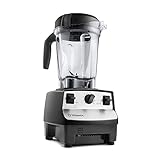 Vitamix 5300 |  Vitamix 750 $699.95 |
|
| Container | 64oz (low profile) | 64oz (high profile) | 64oz (low profile) | 64oz (low profile) |
| Presets | 3 | 0 | 0 | 5 |
| Timer | Count-up | N | N | N |
| Clear Lids | Y | N | N | N |
| Dishwasher Safe Containers | Y | N | N | N |
| Fits Baby Food Container | Y | N | N | N |
| Fits Food Processor Attachment | Y | N | N | N |
| Max Noise | 98db | 106db | 106db | 98db |
| Cord Length | 4ft | 4.5ft | 4.5ft | 4.5ft |
| Weight | 11.86lbs | 10.5lbs | 11.95lbs | 13lbs |
| Height | 17 Inches | 20.5 Inches | 17.25 inches | 17.25 inches |
| Renewed | N | N | Y | N |
| Warranty | 10 years | 7 years | 5 years | 7 years |
| Check Price on Amazon | Check Price on Amazon | Check Price on Amazon | Check Price on Amazon |
I love classic Vitamixes. Comparing models like the 5300, 5200, and 75o pro to the Vitamix A2500 was almost like a walk down memory lane for me! Let's dive on in.
The Vitamix 5200 and 5300 are essentially the same blender, the 5300 just has a low profile pitcher compared to the 5200. On a personal note, I use a 5200 almost weekly at home and I use the 5300 at work 2-3 times a day, so I'd say I'm an expert on these blenders at this point. I will say that though I love my 5200, I hate that I can't fit the blender under my overhead cabinets on my countertop when it's fully assembled.
The good news is that both the 5200 and the 5300 are really, really good blenders. Compared to the Ascent A2500, they definitely look like the poor cousins. With a more utilitarian style, these blenders are super straightforward, but that isn't a bad thing. These blenders last for years, and they continuously produce incredible food. However, if you're looking for a high-end blender with a digital display and a lot of bells + whistles, then the Ascent A2500 is the better option.
One thing to note is that for the most part, you can only find the Vitamix 5300 refurbished at this point, but I've also had a lot of luck with refurbished Vitamix's in the past and would feel confident buying one in the future.
Though the Vitamix 750 is more expensive than the Ascent 2500, it is available in refurbished condition at a value. It comes equipped with a 64oz low profile canister like the Ascent 2500, but like the explorian series comes with a rubberized top as does the 5200 and 5300. This is a hallmark of the legacy Vitamix blenders, and though I like the new flat plastic tops on the Ascent series, I also like the rubberized tops of the older models.
The 750 pro comes with 5 preset functions, 2 more than the Ascent 2500, and all the legacy Vitamix blenders come in 3 different color options while the Ascent line really only comes in black and silver. Overall the 750 pro is a superb Vitamix blender, but if you are looking for a digital display and sleek design elements, the Ascent A2500 is the better bet.
Vs Blendtec
Blendtec and Vitamix have long been competitors in the high-end blender space. Though I don't have a lot of personal experience with Blendtec blenders, I've always heard good things about them.
Like the Ascent A2500, both the Blendtec 575 Classic and the 725 Designer come with bright digital displays and sleek black blender bases. All these machines come with square blender pitchers and high-powered motors. While the 575 Classic is the value-priced option the 625 Designer is almost as expensive as the Vitamix Ascent A2500.
The Blendtec 575 Classic comes equipped with an easy-to-use touch panel that controls up to 5 different speeds and 4 presets blending functions. While the 575 comes with a 75 oz blender pitcher it only has a 32 oz blending capacity. The A2500 has a 64 oz canister but a listed capacity of 64 oz meaning it should be able to blend while completely full.
The 625 Designer comes equipped with a 6speed touch slider that offers fine control over the blender speed. Again both the A2500 and the 625 designer come equipped with digital displays, the A2500 has analog controls while the Blendtec 625 is completely touch-based. The 625 also comes equipped with a 90oz canister, but again has a much smaller capacity at 36oz. I'm not sure why the capacity is so much smaller than the blender pitcher itself, but considering the price jump between the Classic 575 and the 625 Designer, I would have expected a much larger capacity increase.

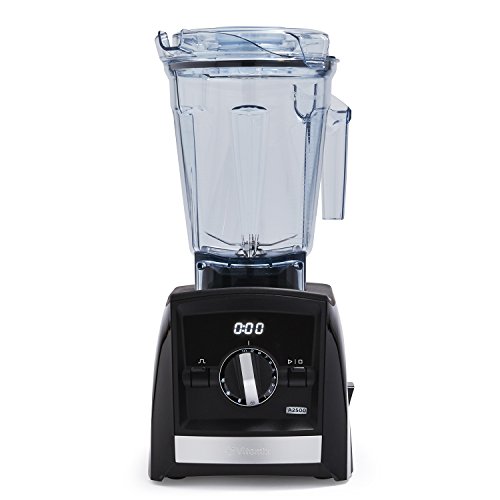
Leave a Reply